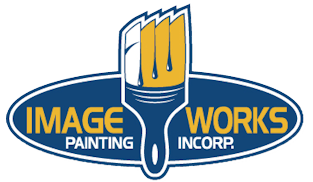Pre-Paint Cleaning Methods: Pressure Washing Vs. Hand Scrubbing
Jeremy Holderness The first step in painting the exterior of your home is to clean the surface. You have a choice of either doing it the old-fashioned way, which is to hand-scrub the surface, or you can use a pressure washer to speed up the process.
The first step in painting the exterior of your home is to clean the surface. You have a choice of either doing it the old-fashioned way, which is to hand-scrub the surface, or you can use a pressure washer to speed up the process.
This week's article will discuss the benefits and drawbacks of each method, help you to determine which is best for your project, and how to go about each one of them.
Pre-Paint Cleaners
Regardless of the method you use, you'll want to enlist the help of a good pre-paint cleaner to help you remove all of the dirt and grime that accumulate on the surface of your home's siding over time.
These cleaners come in a variety of types, but one of my personal favorites for this application is Liquid TSP Substitute concentrated cleaner by Savogran. I like it because it's readily available almost anywhere, is excellent at cleaning the surface prior to painting, can be used with hand-scrubbing or with your pressure washer, is safe for plants and vegetation, can be mixed with bleach to remove mildew and algae, and because it's phosphate-free it doesn't require excessive rinsing so you won't have to worry about adhesion if you don't remove all of the residue.
Apply any cleaning solutions that contain bleach to the surface with a pressurized garden-type sprayer rather than using the chemical injector on your pressure washer so you can better control the spray and keep it from getting on unintended surfaces. And be sure to always wear eye protection.
Before using any prepaint cleaners it is a good idea to protect plants and vegetation by dampening them with your garden hose. Once you've completed your cleaning gently rinse them off again to remove any residue.
Hand Scrubbing
Probably the most widely used method of prepaint cleaning is hand-scrubbing the surface. The good thing about using this method is that it's pretty much fool-proof. Any willing participant with a strong back can effectively clean their home this way.
All you'll need is your cleaner, a bucket, a long-handled scrub brush, a garden hose and water source, rubber or latex gloves, old clothes, and safety goggles. Mix your concentrated cleaner with the appropriate amount of water in your bucket, wet the surface with your garden hose, and go to town scrubbing with your brush.
Work in sections, rinsing your cleaned areas periodically to wash away any dirt residue before it dries.
The drawbacks to using the hand-scrubbing method are that it's sloooow, and it's hard work. If you're going to clean your house this way prior to painting, you should allow yourself several hours to get it done -- depending on the size of the home.
One way to speed up the process and minimize the scrubbing is to apply the prepaint cleaning solution to an area and allow it to work for a few minutes prior to scrubbing. You can do this using a pump-up pressurized garden-type sprayer.
Pressure Washing
Pressure washers (also referred to as "powerwashers") use either a gasoline engine or an electric motor to power a pump that increases the pressure of the water coming from your garden hose to make short work of cleaning and/or preparing a surface for paint. They can be rented at most rental equipment companies or at your local big box store.
Selecting The Right Nozzle Size
Pressure washers come with a variety of tip sizes that allow you to control the intensity of the spray that comes out of the gun/wand assembly. Using Mi-T-M's tip selection guide I'll list their uses below:
- 0 Degree: For removing tough stains on concrete or metal. Never use it on wood or other soft surfaces as it can easily damage the surface.
- 15 Degree: Usually used for surface preparation and can be used on most surfaces.
- 25 Degree: Used to sweep away debris or mud.
- Low Pressure Detergent Nozzle: Used to apply detergents for your cleaning projects.
- Rotating Nozzle: Rotates in a circular motion and greatly increases your cleaning output by as much as 50% -- cutting your cleaning time in half -- but can also damage the wood if you're not careful.
If you're unsure if you've chosen the right nozzle size, you can test it on an inconspicuous area first.
Starting The Unit
Electric Model:
- Connect a garden hose to your pressure washer and to your homes supply.
- Connect the male end of the high pressure hose to the water outlet on the pressure washer and the female end to the plug on the bottom of the gun assembly by pulling back the quick-connect collar, pushing the male end firmly into the assembly, then making sure the collar slides forward locking it into place.
- Install the correct nozzle onto the end of the gun/wand assembly using the quick-connect fittings just as above.
- Turn on the water.
- Firmly hold the gun and point it in a safe direction, pull the trigger to purge the system of any air and prime the unit.
- Plug in the unit and turn it on.
Gas Model:
- Connect a garden hose to your pressure washer and to your homes supply.
- Connect the male end of the high pressure hose to the water outlet on the pressure washer and the female end to the plug on the bottom of the gun assembly by pulling back the quick-connect collar, pushing the male end firmly into the assembly, then making sure the collar slides forward locking it into place.
- Install the correct nozzle onto the end of the gun/wand assembly using the quick-connect fittings just as above.
- Check the oil and fuel levels.
- Make sure the fuel valve is in the open position, move the choke to the open position, move the throttle to the 'full throttle' position, turn the engine switch to the 'on' position.
- Firmly hold the gun and point it in a safe direction, pull the trigger to purge the system of any air and prime the unit.
- Squeezing the trigger with one hand, with the other hand pull the recoil cord like a lawn mower to start the engine.
- Once it fires up, turn the choke to the off position.
Using The Pressure Washer
To apply the prepaint cleaner -- Attach the low-pressure detergent nozzle to the wand following the safety guidelines listed below. Locate the clear detergent pickup hose (sometimes called a chemical injector hose) that's attached to the pump. Insert the end of the hose into the container of undiluted prepaint cleaner concentrate and make sure it stays completely submerged in the liquid while you're applying the cleaner.
Squeeze the trigger to apply the solution to the surface. The pressure washer will mix the concentrated cleaner with the water for you. Allow the solution to set on the surface for several minutes but do not let it dry.
To clean and rinse the surface -- Attach the appropriate nozzle following the safety guidelines listed below. Use the wand in a sweeping motion traveling along the length of the siding clapboards, working from the top down as you go along. Keep the nozzle consistently moving at all times to avoid lap marks or damage to the surface. Direct the water at a slight angle to the surface with the nozzle at a distance of a couple of feet from the surface. Try to avoid concentrating on the bottom of each siding lap as to avoid forcing water underneath the siding clapboards.
Power washing can dislodge loose or peeling paint from the surface which will land on your yard or in your landscaping. You can try pinning down some landscaping fabric underneath of your work area to collect paint chips and make cleanup easier.
Allow the surface to dry for a few days before proceeding to any scraping or painting steps.
Pressure Washer Safety
- Never point the nozzle at yourself or anyone else to avoid injecting water into the skin.
- Engage the trigger safety latch when not spraying.
- Use a properly grounded GFCI outlet when using an electric model
- When you turn off the engine always turn off the water and release any pressure in the pump by squeezing the trigger before you disconnect the hoses or change to a different nozzle size. Never change to a different nozzle size without following these steps.
- Use a telescoping wand attachment to reach high areas, rather than working off of a ladder when pressure washing. The recoil can cause you to loose your balance, and standing on a wet surface can be a slip hazard.
Pressure washing will cut your cleaning time to a fraction of what it takes to do the scrubbing by hand. The other benefit is that it will help to remove some of the loose paint that might be peeling from the home, reducing the amount of time you'll spend scraping the surface.
However, the drawback to pressure washing are:
You're gonna get wet, possibly very wet. You can protect yourself by purchasing a rain suit that's sold at most hardware or big box stores.
You could damage soft surfaces like wood. It is easy for the unexperienced, untrained person to inject excess water into wood and even cause damage to the surface that will have to be repaired. In fact, I often advise people that if you have any doubts about your ability to tackle the project yourself you should go with the safe option of hand-scrubbing, or turn the pressure washing over to the professionals. But be careful, because some professional painting companies have little more experience with a pressure washer than does an untrained homeowner, so choose one carefully.
If you're located in the Greater Pittsburgh or Western Pennsylvania areas and would like some assistance with your pre-paint cleaning and/or painting project please give us a call at 724-898-2446, visit our 'Contact Us' page, or click on the button below to have us contact you.








